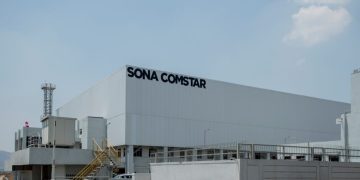India’s automotive sector is paving the way for clean energy sources, with the Electric Vehicle market set to reach `50,000Cr by 2025. As the popularity of electric vehicles grows, the demand for properly trained technicians and workers becomes increasingly urgent.
Ashutosh Verma further discusses the government’s green initiatives, battery-swapping policies, and investment in research and development to produce 100% electric vehicles by 2030.
How do you, as a Clean Energy Scientist, view India’s automotive sector as it explores clean energy sources?
Considering that the automotive sector is crucial to both economic expansion and technical progress, it has served as a reliable gauge of the growth of the Indian economy. India is a leading exporter of automobiles, and we anticipate rapid future export earnings in the forthcoming years. As a clean energy scientist, the opinions are fact-based and strictly adhere to the reports and my personal knowledge on the subject. The automotive sector in India is one that is paving the way for clean energy sources, as the EV market is expected to reach `50,000Cr by 2025. As the automotive sector progresses, we can observe the emergence of electric vehicles in India. We are already beginning to witness the adoption of electric vehicles in India, with the introduction of new models and sales increasing exponentially in the last few years. Moreover, the government has recognised the potential of the electric vehicle market in India, introducing policies to promote its adoption.
Even though the idea of electric vehicles is not new, India now seems to be embracing it. How accommodating is the government in this area, and what steps are EV manufacturers taking to produce 100% electric vehicles by 2030?
Previously, the general public in India was unaware of the existence of electric vehicles due to a lack of adequate infrastructure and proper policies, both on the part of the government and the manufacturers. Now, as environmental concerns increase and the government promotes its green initiative, electric vehicles are becoming a viable option in the Indian market. To promote sustainability and increase the appeal of electric vehicles to customers, the government implemented the battery-swapping policy, which will also allow depleted batteries to be swapped out for charged ones at specific charging stations. Furthermore, To produce 100% EVs by 2030, the manufacturers are investing in advanced research and development to bring down the cost of electric vehicles, improve efficiency, and create an efficient charging infrastructure.
What are the biggest bottlenecks in your view for the EV manufacturers in India to compete at the global level?
One of the biggest bottlenecks for EV manufacturers in India to compete at the global level is the lack of a comprehensive charging infrastructure that is reliable, efficient, and cost-effective. To overcome the perceived challenges, the government needs to come up with clear policies and regulations that enable the establishment of public charging stations in order to encourage consumers to buy electric vehicles.
With the recent discovery of a 5.9 mln tonne lithium deposit in India, the prospects for the country’s transition to clean energy and increased adoption of EVs are looking promising. As an industry participant, how do you view this development?
Lithium is the key component in the production of electric vehicles and so, the recent discovery of a large deposit in India is highly significant. India is the second-largest importer of lithium and relies heavily on countries like China, Japan, and Vietnam for its supply, so this revelation has the potential to be a major game-changer. The country’s prospects for switching to clean energy and for increased EV adoption appear bright because EV producers can use this affordable, high-quality local lithium to lower the overall cost of producing EVs.
How will these new developments propel the growth trajectory of the automotive aftermarket, particularly in the repair and maintenance realm?
The availability of an affordable, high-quality local source of lithium should enable automakers to develop more efficient and innovative EVs with greater access to the Indian market. As lithium metal is already widely used in various automotive applications such as batteries and lubricants, the availability of this resource will lead to better EV production, which will result in increased demand for repairs and maintenance services. This, in turn, will drive the growth of the EV automotive after market by providing more opportunities for qualified mechanics and technicians to find employment.
What are your thoughts on EV/HEV-ready garages?
With the growing demand for electric vehicles, infrastructure and maintenance are key aspects to ensuring their longevity and efficient functioning. The EV/HEV garages are an essential part of this infrastructure as they provide a facility for the repair, maintenance, and charging of electric vehicles. Due to the potential consequences of a mishap, training and knowledge are even more crucial in this situation. Therefore, it is essential for all EV/HEV garages to have well-trained personnel who have the necessary knowledge and expertise to safely handle electric vehicles.
With the popularity of electric vehicles growing, there is an urgent need for workers to have access to the necessary information and training, especially for independent and unauthorised workshops. To address this issue, what steps are Exalta, a player in the Indian EV market, taking to ensure workers receive the necessary information and training?
By 2030, the electric vehicle industry is expected to employ 5 mln people. In response to this pressing issue, Exalta has significantly contributed to the workforce’s knowledge and understanding of the EV market. To support this growth, our brand ensures that the technicians and workers are properly equipped to handle the maintenance and repair of electric vehicles by providing them with adequate training and advocating for practises that can help promote the safe maintenance of electric vehicles.
How was Exalta incepted, how has it evolved over the years, and what is the next step?
Exalta provides the cleanest solar solutions with more than 20 branches. The company incepted a vision to provide high-quality and cost-effective sustainable energy solutions and electric vehicles across all markets. Exalta has been innovating and working in clean energy by associating with various government and non-government agencies. His important works are put on display at ‘National Small Industries Corporation (NSIC)’, New Delhi. Exalta is now widely recognised as one of the leading players in the clean energy and electric vehicle space.
How has Exalta confronted recent regulatory initiatives involving automotive?
The Indian government’s “Make in India” initiative in the Budget 2023 is a positive step towards ensuring the industry’s independence from global disruptions. This is a significant step towards making electric mobility an attractive and profitable option for the average person. Exalta would therefore facilitate the initiative by promoting the utilisation of lithium-ion batteries in electric vehicles (EVs) and recyclable batteries that won’t further harm the environment. Also, in general, people search for vehicles that are affordable and reliable, and so Exalta will work towards providing EVs that meet these criteria while maintaining optimal energy efficiency. To support this notion, Exalta will introduce vehicles such as e-bikes and e-scooters that are less expensive and more accessible to the public. This is a significant step towards making electric mobility an attractive and profitable option for the average income person.



























































